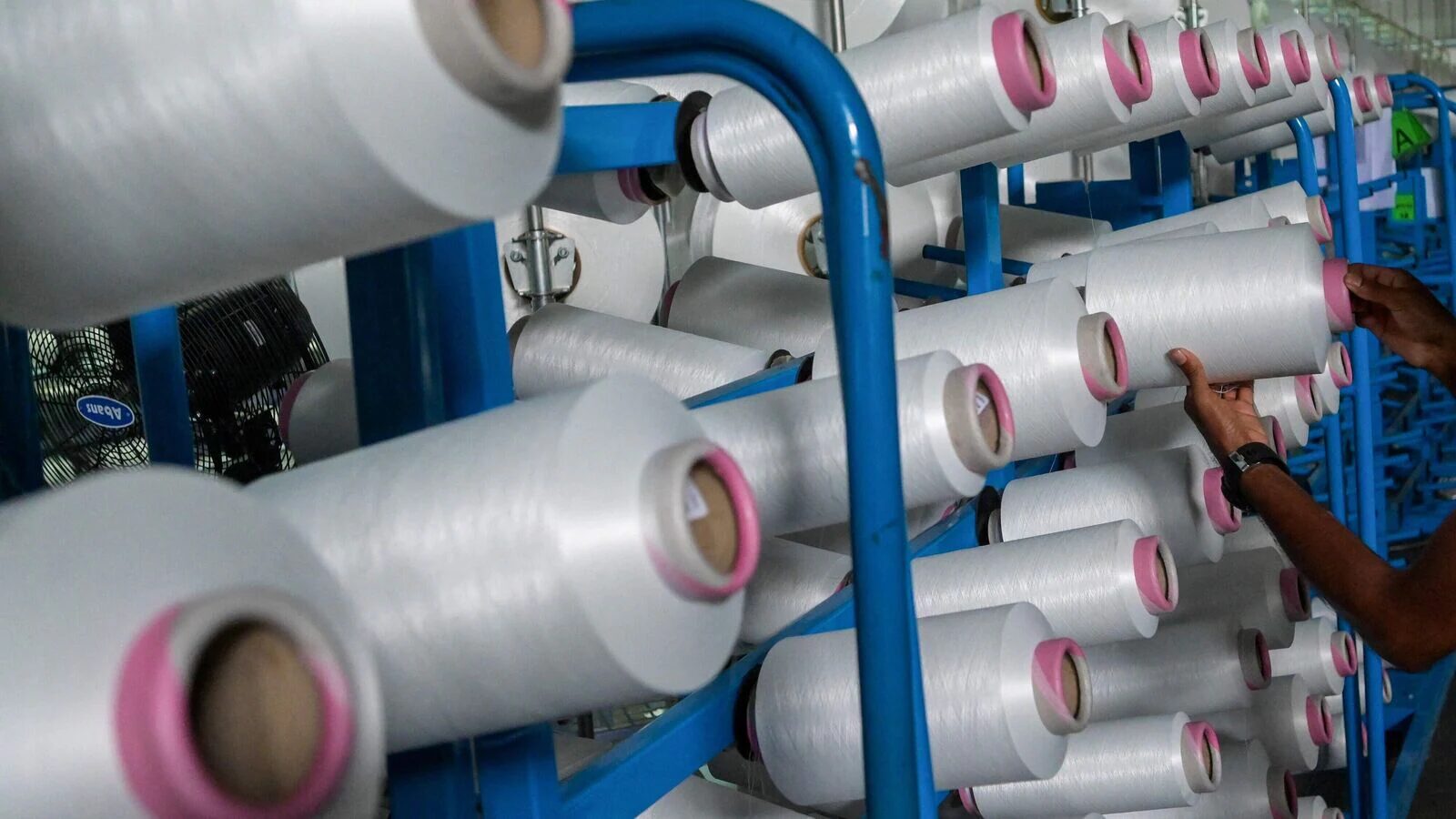 ICRA expects the domestic cotton spinning industry1 to recover in FY2025, growing by 6-8%, supported by a 4-6% volume growth and mild realisation gains. This follows two consecutive years of de-growth on the back of subdued domestic demand and falling yarn realisations. Over two-thirds of the total cotton yarn produced is consumed domestically, where green shoots of recovery are visible from the downstream segments, such as readymade garments and home textiles. Exports, which rebounded in FY2024 on a lower base, are likely to normalise in FY2025. While the exports will remain exposed to headwinds from sluggish global demand, a shift in sourcing preference away from other countries will offset this impact to an extent.
ICRA expects the domestic cotton spinning industry1 to recover in FY2025, growing by 6-8%, supported by a 4-6% volume growth and mild realisation gains. This follows two consecutive years of de-growth on the back of subdued domestic demand and falling yarn realisations. Over two-thirds of the total cotton yarn produced is consumed domestically, where green shoots of recovery are visible from the downstream segments, such as readymade garments and home textiles. Exports, which rebounded in FY2024 on a lower base, are likely to normalise in FY2025. While the exports will remain exposed to headwinds from sluggish global demand, a shift in sourcing preference away from other countries will offset this impact to an extent.
Domestic cotton prices, which peaked sharply in H1 FY2023 and reached a lifetime high of Rs. 284 per kg, have been declining over the last two years. The average prices, which fell by ~26% YoY in FY2024 amid a moderation in global prices and weak demand from the end-user segments, are likely to marginally increase in the near term with a recovery in demand and an expected reduction in the cotton sown area. Cotton yarn prices, too, had been declining since June 2022 amid softening cotton fibre prices and slowing demand from the downstream segments. ICRA expects the cotton yarn prices to rise marginally in FY2025 and remain exposed to the vagaries of demand.
Commenting on this, K Srikumar, Senior Vice President & Co-Group Head, Corporate Sector Ratings, ICRA, said: “The operating income of Indian cotton spinning companies is estimated to improve by 6-8% in FY2025 with a recovery in domestic demand and marginal rise in yarn realisations. The gross contribution margins for spinners, which contracted sharply by ~20% YoY in FY2024 amid weak domestic demand, recovered by an estimated ~5% in Q1 FY2025 and the recovery trend is likely to continue for the remainder of FY2025. Accordingly, ICRA expects the operating profit margins to expand further by 100-150 bps, supported by scale benefits and the cost-saving measures undertaken by industry players.”
The industry had incurred high debt-funded capex in FY2023, partly due to the deferment of major capital expenses during the Covid period (FY2020-21). Consequently, the industry’s coverage metrics deteriorated in FY2023 with a drop in yarn demand in H2 FY2023. The spinners have halted major capex plans in the near term due to weak domestic demand and lower realisations in FY2024. ICRA, however, expects a marginal pick-up in capex announcements in FY2025, driven by the modernisation requirements of machineries, flow of demand from the China Plus One scheme, and improvement in domestic demand from downstream apparel companies.
“The industry leverage levels rose in FY2024, primarily due to the increase in short-term borrowings availed to fund the incremental working capital requirements. The leverage levels are expected to reduce with better cash accruals and expectation of minimal capex spending. Consequently, the industry’s debt protection metrics shall witness some improvement – the total outside liabilities to tangible net worth ratio is expected to improve marginally to ~0.6 times in FY2025 (0.7 times in FY2024), while the total debt to operating profit ratio shall improve to ~2.5-3.0 times from 3.5-4.0 times in FY2024.” Srikumar added.
















